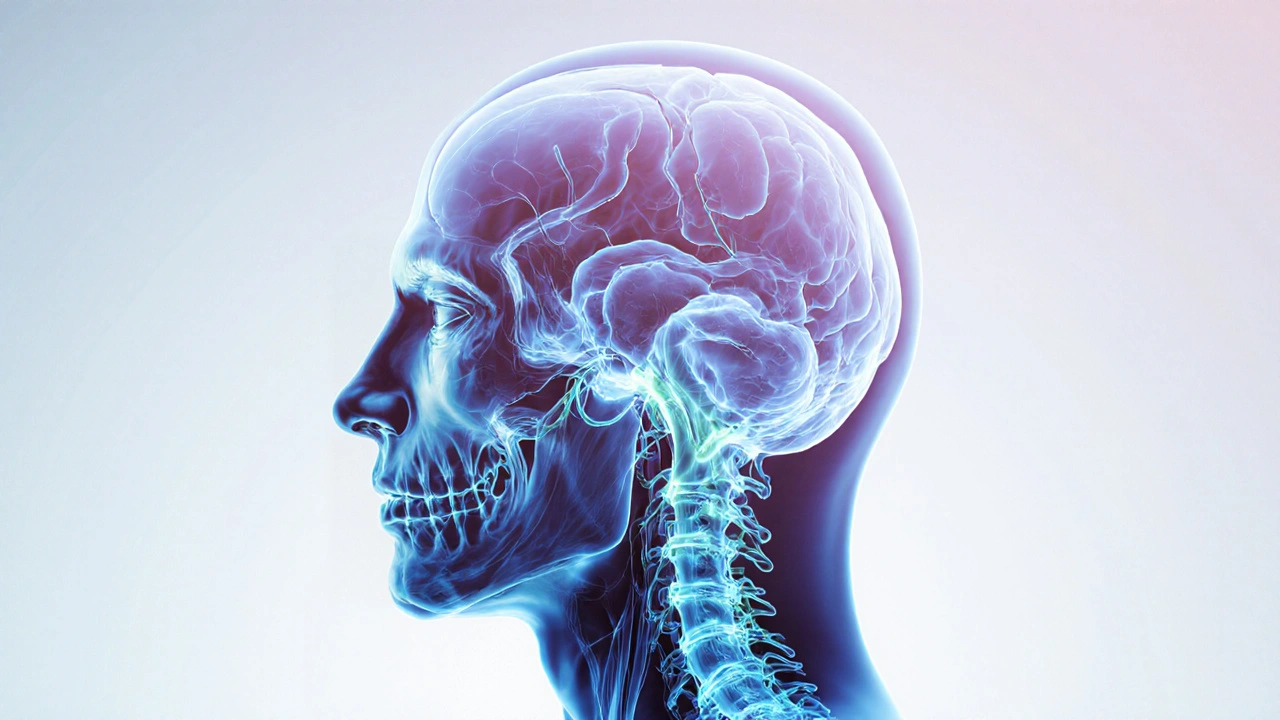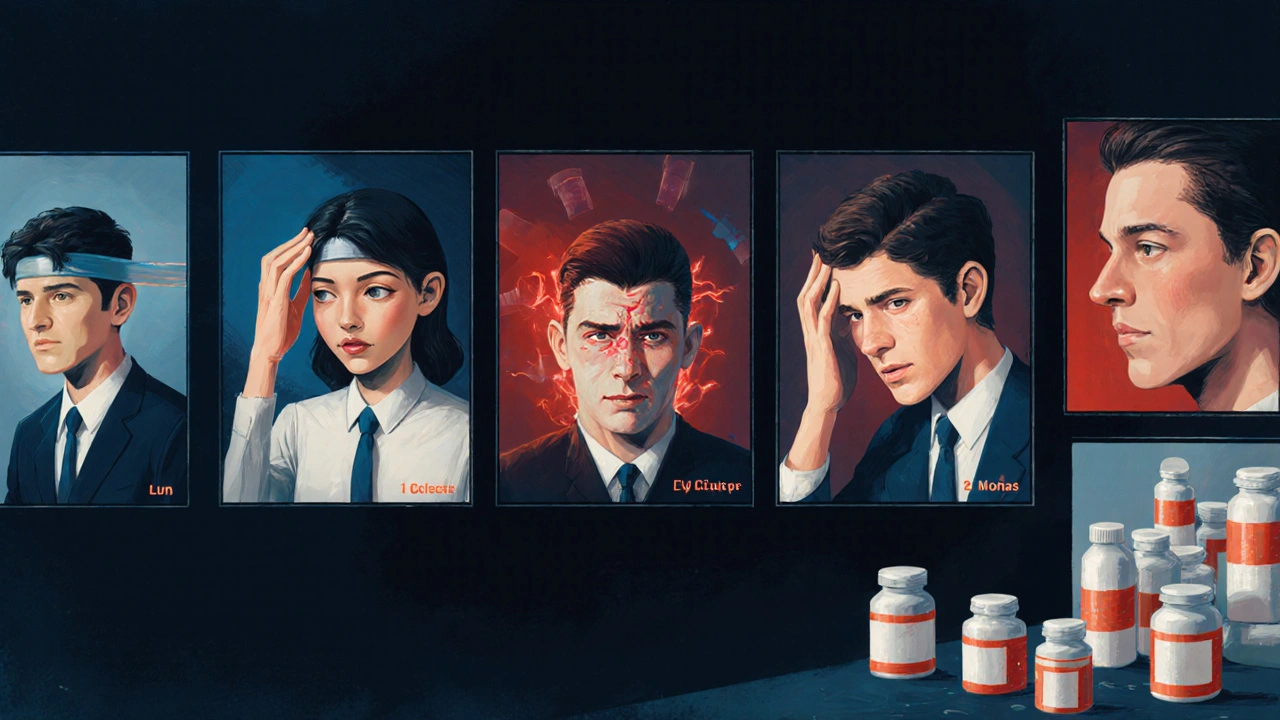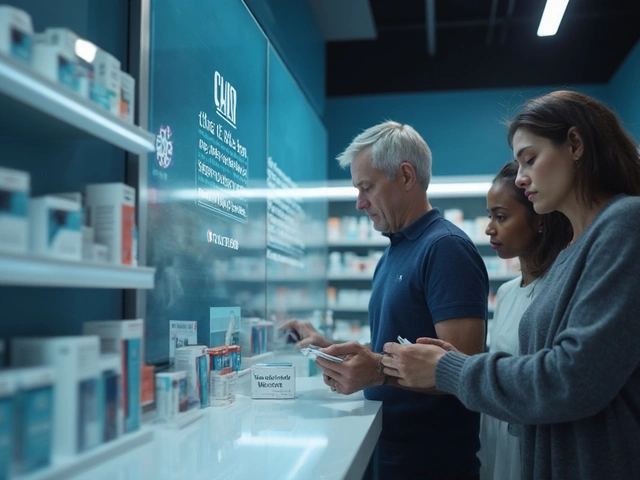
Key Takeaways
- headache types fall into primary (migraine, tension, cluster, sinus, medication‑overuse) and secondary categories.
- Location, pain quality, duration, and associated symptoms help you pinpoint the exact type.
- Lifestyle tweaks (hydration, sleep hygiene, stress management) prevent many everyday attacks.
- Over‑the‑counter pain relievers work for occasional tension aches, but recurring pain often needs prescription or preventive therapy.
- Seek urgent medical care if pain is sudden, severe, or accompanied by neurological signs.
What is a Headache and Why Does It Matter?
A headache is not a disease itself; it’s a signal that something in the nervous system or surrounding structures is off‑balance. The brain itself lacks pain receptors, so the pain originates from the meninges, blood vessels, muscles, or nerves around the skull. Understanding the source helps you choose the right remedy instead of blindly popping pills.
Primary vs. Secondary Headaches
Doctors split headaches into two broad buckets:
- Primary headaches are standalone conditions-migraine, tension‑type, cluster, sinus, and medication‑overuse headaches. They aren’t caused by another disease.
- Secondary headaches signal an underlying issue such as infection, head injury, vascular problems, or medication side‑effects.
Most people experience primary headaches, but recognizing red‑flag symptoms that point to a secondary cause can be lifesaving.
Common Primary Headache Types
Below are the six most frequently diagnosed primary headaches, each with its own hallmark features.
tension headache
Also called a stress headache, this is the most common type. The pain feels like a tight band around the head, often dull and bilateral. Triggers include prolonged screen time, poor posture, and emotional stress. Episodes last from 30 minutes to several days and usually improve with rest, hydration, or simple over‑the‑counter analgesics.
migraine
Migraines are intense, pulsating headaches lasting 4-72 hours. They’re usually unilateral (one side) and can be accompanied by nausea, vomiting, and sensitivity to light or sound. About 25% of migraine sufferers experience an aura-visual disturbances like flashing lights or zig‑zag lines-before the pain starts. Triggers are diverse: hormonal fluctuations, certain foods (aged cheese, chocolate), lack of sleep, and environmental changes.
cluster headache
Cluster headaches are rare but excruciating. They strike in cycles (clusters) that can last weeks to months, followed by remission periods. Pain is severe, orbital (around one eye), and often associated with tearing, nasal congestion, or drooping eyelid on the affected side. Episodes can occur up to eight times a day, each lasting 15‑180 minutes. Smoking and alcohol are strong triggers during a cluster period.
sinus headache
Sinus headaches stem from inflammation of the sinus cavities, usually due to infection or allergies. Pain is deep‑sitting, worsens with bending forward, and is often paired with facial pressure, nasal discharge, and fever. Over‑the‑counter decongestants or antibiotics (if bacterial) resolve most cases.
medication‑overuse headache
Paradoxically, using pain relievers too often can trigger a chronic daily headache. If you take triptans, NSAIDs, or ergotamines on more than 10‑15 days per month, the brain becomes sensitized and pain recurs even without a new trigger. The cure is a structured withdrawal protocol under a physician’s supervision, followed by preventive therapy.
secondary headache
Secondary headaches arise from another medical condition-think concussion, meningitis, temporal arteritis, brain tumor, or high blood pressure. Because the underlying cause varies widely, treatment focuses on addressing that primary issue. Red‑flag signs that demand urgent evaluation include sudden “worst ever” pain, fever, neck stiffness, altered consciousness, or new neurological deficits.

How to Differentiate Headache Types
Doctors use a simple checklist to narrow down the diagnosis. Ask yourself these questions:
- Where is the pain located? (front, side, behind the eyes, whole head)
- How would you describe the pain? (throbbing, pressure, burning)
- How long does an episode last?
- What, if anything, triggers the attack?
- Are there accompanying symptoms-nausea, visual changes, nasal discharge, eyelid droop?
- How often does it happen? (sporadic vs. daily)
Matching your answers to the patterns above usually points to the right category.
Comparison Table of Primary Headaches
Key differences among primary headache types
Headache Type
Typical Pain Location
Quality & Duration
Common Triggers
First‑Line Treatment
Tension
Both sides, band‑like
Dull, 30min‑days
Stress, poor posture, fatigue
OTC NSAIDs, relaxation
Migraine
One side, often behind eye
Pulsating, 4‑72h
Hormones, certain foods, sleep changes
Triptans, anti‑emetics, preventive meds
Cluster
Orbital, unilateral
Severe, 15‑180min
Alcohol, smoking, seasonal patterns
High‑flow oxygen, sumatriptan injection
Sinus
Forehead, cheekbones
Pressure, days‑weeks
Allergies, infections
Decongestants, antibiotics if bacterial
Medication‑Overuse
Any area, often diffuse
Daily, chronic
Frequent NSAID/triptan use
Medication withdrawal, preventive therapy
When to Seek Professional Help
Most headaches are benign, but a handful of warning signs-known as "red flags"-should prompt immediate medical evaluation:
- Sudden, severe pain described as "thunderclap".
- Fever, stiff neck, or rash (possible meningitis).
- New neurological symptoms: vision loss, weakness, speech difficulty.
- Headache after head trauma, even if mild.
- Progressive worsening over weeks or months.
If any of these appear, go to an emergency department or call your doctor right away.

Management Strategies for Everyday Relief
Below are practical steps you can start using today, whether you’re dealing with occasional tension aches or chronic migraines.
Lifestyle Tweaks
- Hydration: Aim for at least 2L of water daily; dehydration is a common trigger.
- Sleep hygiene: Keep a regular 7‑9hour schedule; avoid screens 30minutes before bed.
- Screen breaks: Follow the 20‑20‑20 rule (every 20minutes, look 20feet away for 20seconds).
- Exercise: Moderate aerobic activity 3‑4 times a week reduces tension and migraine frequency.
- Stress reduction: Try mindfulness, breathing exercises, or short walks when you feel tension building.
Medication Guide
- For occasional tension headaches, ibuprofen 200‑400mg or acetaminophen works well.
- Migraine attacks often need triptans (sumatriptan, rizatriptan) taken early in the aura phase.
- Preventive meds-beta‑blockers, CGRP antagonists, or anticonvulsants-are reserved for >4 attacks per month.
- Avoid daily NSAID use beyond 10 days to prevent medication‑overuse headaches.
Non‑Pharmacologic Therapies
- Cold or warm compress: Cold for migraine throbbing, warm for tension muscles.
- Massage or physiotherapy: Relieve neck and shoulder muscle tightness.
- Acupuncture: Some studies show reduced migraine frequency.
- Cognitive‑behavioral therapy (CBT): Helps manage stress‑related tension headaches.
Preventive Checklist
Keep this quick list handy to stop headaches before they start:
- Track triggers in a diary (food, sleep, stress).
- Maintain consistent meal times; avoid skipping meals.
- Limit caffeine to ≤200mg per day.
- Wear sunglasses outdoors to reduce glare‑induced migraines.
- Schedule regular eye exams-uncorrected vision strain can mimic tension pain.
Frequently Asked Questions
What is the difference between a migraine and a tension headache?
Migraine pain is usually throbbing, one‑sided, lasts longer (4‑72hours), and comes with nausea, light and sound sensitivity, or an aura. Tension headache pain feels like a steady pressure across both sides, lasts from half an hour to a few days, and rarely includes nausea or visual changes.
When should I see a doctor for a headache?
Seek medical care if the headache is sudden and severe, accompanied by fever or neck stiffness, causes visual loss or weakness, follows a head injury, or changes dramatically in pattern. Also, if you need medication more than 10 days a month, get evaluated for medication‑overuse headache.
Can dietary changes help prevent migraines?
Yes. Many migraine sufferers find relief by avoiding trigger foods such as aged cheeses, processed meats, chocolate, and excessive caffeine. Keeping a food‑symptom diary helps pinpoint personal culprits.
What are the best over‑the‑counter options for a tension headache?
Ibuprofen 200‑400mg or naproxen 220mg taken with food works well for most people. If you can’t tolerate NSAIDs, acetaminophen 500‑1000mg is a safe alternative.
Is it safe to use triptans daily for chronic migraine?
No. Triptans are meant for acute attacks and can cause medication‑overuse headaches if used more than 10 days per month. For chronic migraine, doctors usually prescribe preventive medications or newer CGRP‑targeted therapies.
Next Steps
If you’ve identified a pattern that matches migraine or cluster headaches, book an appointment with a neurologist for a full assessment. For occasional tension or sinus pain, try the lifestyle tweaks and OTC options listed above for a week-if relief doesn’t happen, bring your symptom diary to a primary‑care doctor for further work‑up.
Remember, a headache is your body’s way of telling you something needs attention. By knowing the type, triggers, and proper treatment, you turn that warning into a manageable part of life rather than a constant mystery.
| Headache Type | Typical Pain Location | Quality & Duration | Common Triggers | First‑Line Treatment |
|---|---|---|---|---|
| Tension | Both sides, band‑like | Dull, 30min‑days | Stress, poor posture, fatigue | OTC NSAIDs, relaxation |
| Migraine | One side, often behind eye | Pulsating, 4‑72h | Hormones, certain foods, sleep changes | Triptans, anti‑emetics, preventive meds |
| Cluster | Orbital, unilateral | Severe, 15‑180min | Alcohol, smoking, seasonal patterns | High‑flow oxygen, sumatriptan injection |
| Sinus | Forehead, cheekbones | Pressure, days‑weeks | Allergies, infections | Decongestants, antibiotics if bacterial |
| Medication‑Overuse | Any area, often diffuse | Daily, chronic | Frequent NSAID/triptan use | Medication withdrawal, preventive therapy |
What is the difference between a migraine and a tension headache?
Migraine pain is usually throbbing, one‑sided, lasts longer (4‑72hours), and comes with nausea, light and sound sensitivity, or an aura. Tension headache pain feels like a steady pressure across both sides, lasts from half an hour to a few days, and rarely includes nausea or visual changes.
When should I see a doctor for a headache?
Seek medical care if the headache is sudden and severe, accompanied by fever or neck stiffness, causes visual loss or weakness, follows a head injury, or changes dramatically in pattern. Also, if you need medication more than 10 days a month, get evaluated for medication‑overuse headache.
Can dietary changes help prevent migraines?
Yes. Many migraine sufferers find relief by avoiding trigger foods such as aged cheeses, processed meats, chocolate, and excessive caffeine. Keeping a food‑symptom diary helps pinpoint personal culprits.
What are the best over‑the‑counter options for a tension headache?
Ibuprofen 200‑400mg or naproxen 220mg taken with food works well for most people. If you can’t tolerate NSAIDs, acetaminophen 500‑1000mg is a safe alternative.
Is it safe to use triptans daily for chronic migraine?
No. Triptans are meant for acute attacks and can cause medication‑overuse headaches if used more than 10 days per month. For chronic migraine, doctors usually prescribe preventive medications or newer CGRP‑targeted therapies.
9 Comments
Write a comment
More Articles

Infographics About Generics: Visual Education Tools for Patient Understanding
Infographics about generics help patients understand why generic drugs are safe, effective, and identical to brand-name versions. Learn how visual tools are reducing confusion, lowering costs, and improving medication adherence.

Sweet Vernal Grass: The Ideal Dietary Supplement for a Balanced Lifestyle
Discover how sweet vernal grass works as a natural dietary supplement, its antioxidant power, adaptogenic benefits, and practical ways to add it to a balanced lifestyle.

Rise of Next-Gen Viagra Alternatives in 2025: What You Need to Know
Curious about what's next after Viagra? This article digs into the 2025 wave of new alternatives, including advanced PDE5 inhibitors and innovative therapies shaking up erectile dysfunction treatment. Explore real results, learn what works, and get savvy about what's coming to pharmacy shelves soon. Whether you're after faster effects or fewer side effects, this guide helps you cut through the marketing and find the best science-backed options. Don't get stuck in the past; see how sexual health is evolving this year.
Elaine Curry
October 12, 2025 AT 21:35I couldn't help but notice you mentioned medication‑overuse headaches-gotta ask if you're on any pain meds daily? It's kind of weird how many people hide that from doctors maybe you should track it more closely.